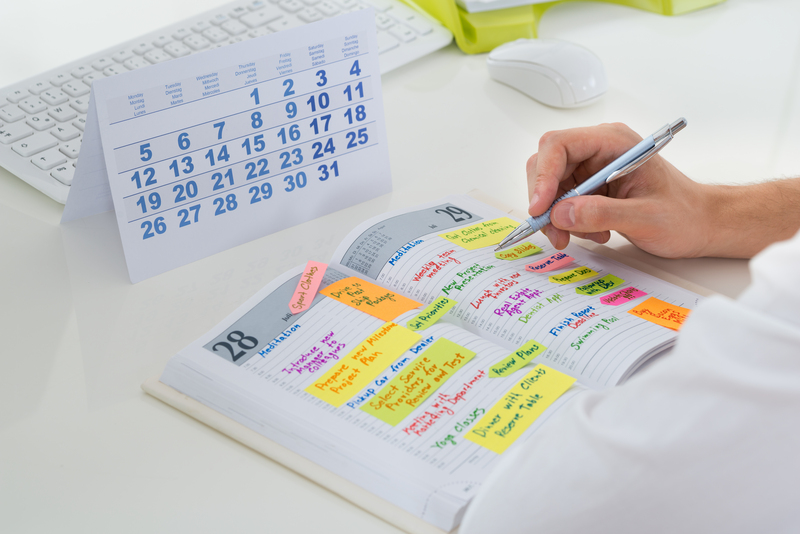Pack with Confidence: Strategies for an Orderly Move
Posted on 22/05/2025
Pack with Confidence: Strategies for an Orderly Move
Moving to a new home is an exciting chapter in anyone's life, but the thought of packing can often feel overwhelming. Making sure your cherished possessions arrive safely and nothing gets lost in the process is crucial. Pack with confidence by using proven strategies that streamline the moving process, reduce stress, and ensure an orderly move every step of the way.
Why Packing With Confidence Matters
Whether you are moving across town or across the country, being prepared and organized can make a world of difference. Packing confidently minimizes the risk of losing important items, prevents breakage, and helps you settle into your new space quickly. By learning strategies for an orderly move, you'll not only protect your belongings but also save time, money, and energy.

Pre-Move Preparation: The Key to a Smooth Transition
1. Create a Moving Timeline
- Plan ahead: Start preparations at least eight weeks before your move. A timeline keeps you on track and prevents last-minute chaos.
- Checklist creation: Break down tasks week by week, from decluttering to scheduling movers.
- Set milestones: Assign deadlines to each step, such as securing packing materials or arranging utility shutoff dates.
2. Declutter for an Orderly Move
Moving offers a perfect opportunity to downsize and only bring what's essential. Before you pack with confidence, assess every item you own for necessity and sentimentality.
- Sort methodically: Go room by room and group possessions into categories: keep, donate, sell, recycle, or discard.
- Lighten your load: Reducing clutter means fewer boxes and a less expensive move.
- Organize a yard sale: Earn extra cash from unwanted items and minimize waste.
3. Gather your Supplies
Packing is much easier when you have the right materials. Equip yourself with sturdy moving boxes, high-quality tape, packing paper, bubble wrap, and markers for labeling.
- Diverse box sizes: Use small, medium, and large boxes, plus specialty cartons for items like dishes or wardrobes.
- Protective materials: Wrap fragile items with bubble wrap and packing paper to avoid damage during transit.
- Color-coded labels: Assign a color to each room and mark boxes accordingly for instant identification.
Packing Techniques: Strategies for an Orderly Move
1. Room-by-Room Approach
Organize your packing by focusing on one room at a time. This prevents mixing items from different areas, making both packing and unpacking effortless.
- Start with infrequently used rooms: Begin in attics, basements, or guest rooms.
- Prioritize essentials last: Save daily-use items for the final boxes, so you can maintain your routine until moving day.
2. Label Everything Clearly
Clear labeling is a secret weapon for an orderly move. Mark every box with its contents, destination room, and handling instructions.
- Be specific: Instead of "kitchen stuff," write "pots and pans" or "glassware."
- Use color coding: Assign a color to each room and match it on the boxes and in your new home.
- Fragile items: Mark as "FRAGILE" and add arrows to indicate which side must stay upright.
3. Create an Inventory List
Keep a detailed inventory as you pack with confidence. Documenting the contents of each box helps you track your belongings and simplifies the unpacking process.
- Number boxes: Assign each box a unique number and list its contents on a master list or use a moving app.
- Photograph valuables: In case of loss or damage, photos help with insurance claims.
4. Use the Right Packing Method for Every Item
Not all belongings can be boxed in the same way. Apply these packing methods for optimal protection:
- Clothing: Use wardrobe boxes for hanging clothes or pack folded apparel in suitcases.
- Books: Heavy items go in small boxes to avoid overloading.
- Dishes and glassware: Wrap individually and use dish packs with dividers.
- Electronics: Keep original boxes if possible; otherwise, bubble wrap them and label cables and remotes for easy reassembly.
Safeguarding Valuables During Your Move
1. Pack Fragile Items with Extra Care
- Double the padding: Ensure sufficient bubble wrap, packing paper, or foam peanuts for all breakables.
- Use sturdy boxes: Fragile items should only go into reinforced boxes with snug packing to prevent shifting.
- Seal and label: Secure boxes with strong tape and mark them as "Fragile" on all sides.
2. Handle Essentials and Documents Separately
Your most important papers and valuables deserve special attention during a move.
- Personal documents: Keep passports, IDs, birth certificates, and financial records in a separate, clearly labeled folder you carry yourself.
- Medical supplies: Pack medication and first aid items within easy reach.
- Daily essentials bag: Prepare a bag with toiletries, chargers, a change of clothes, and snacks for the first couple of days in your new home.
Smart Moving Day Tactics for a Smooth Transition
1. Coordinate with Movers for an Orderly Move
Whether you've hired professionals or assembled friends and family, clear communication on moving day is vital.
- Provide instructions: Share your color-coded system and inventory with your movers.
- Designate zones: Mark where boxes should be placed in your new home for efficient unloading.
- Supervise fragile items: Make sure high-value or delicate objects get special handling.
2. Keep a Toolkit Handy
- Essentials box: Pack tools, tape, scissors, a flashlight, and cleaning supplies for easy access on arrival.
- Have spare supplies: You may need extra boxes, tape, or markers for unexpected needs.
Efficient Unpacking: Settling Into Your New Home
1. Prioritize Unpacking by Importance
Once you arrive, it's tempting to start opening all your boxes. Instead, follow an orderly approach:
- Essential rooms first: Start with the kitchen, bathrooms, and bedrooms for immediate comfort.
- Furniture assembly: Set up beds and key furniture to make your space functional right away.
2. Use Your Inventory and Labeling to Unpack Fast
- Reference your master list: Check off boxes as you unpack to ensure everything arrived safely.
- Follow your color-coding: Move boxes to their correct rooms before unpacking to avoid confusion.
3. Dispose of Packing Materials Responsibly
Once your move is complete, be eco-friendly by recycling or donating your used packing supplies. Many local organizations will accept gently used boxes and paper.
Special Packing Challenges and Solutions
1. Interstate and International Moves
- Regulations: Understand customs and shipping limitations for items crossing state or country borders.
- Secure transport: Choose reputable moving companies with experience in long-distance logistics.
- Documentation: Ensure all paperwork is complete -- from inventory lists to insurance forms.
2. Moving with Pets and Plants
- Pet essentials: Prepare a separate box for pet food, bedding, and records.
- Transporting plants: Verify if plants can be legally transported and pack them to minimize shock or damage.

Top Packing Tips for Stress-Free Moving
- Start early: The sooner you begin, the more organized you'll be.
- Stay systematic: Stick to your checklist and resist the urge to cut corners.
- Ask for help: Enlist friends, family, or professional packers for challenging tasks.
- Stay flexible: Be ready to adapt in case of schedule changes or unexpected issues.
Conclusion: Move with Confidence and Organization
A successful move isn't just about getting your things from point A to point B--it's about doing so in a way that's efficient, safe, and stress-free. By adopting these strategies for an orderly move, you can pack with confidence and look forward to your new beginning, knowing everything is organized and under control. Remember, the key to a smooth transition lies in careful preparation, systematic packing, and expert unpacking. Embrace your move with confidence, and you'll soon be making happy new memories in your fresh space.
Related Resources
Use these expert tips to ensure your next move is as smooth and organized as possible. Good luck and happy moving!



